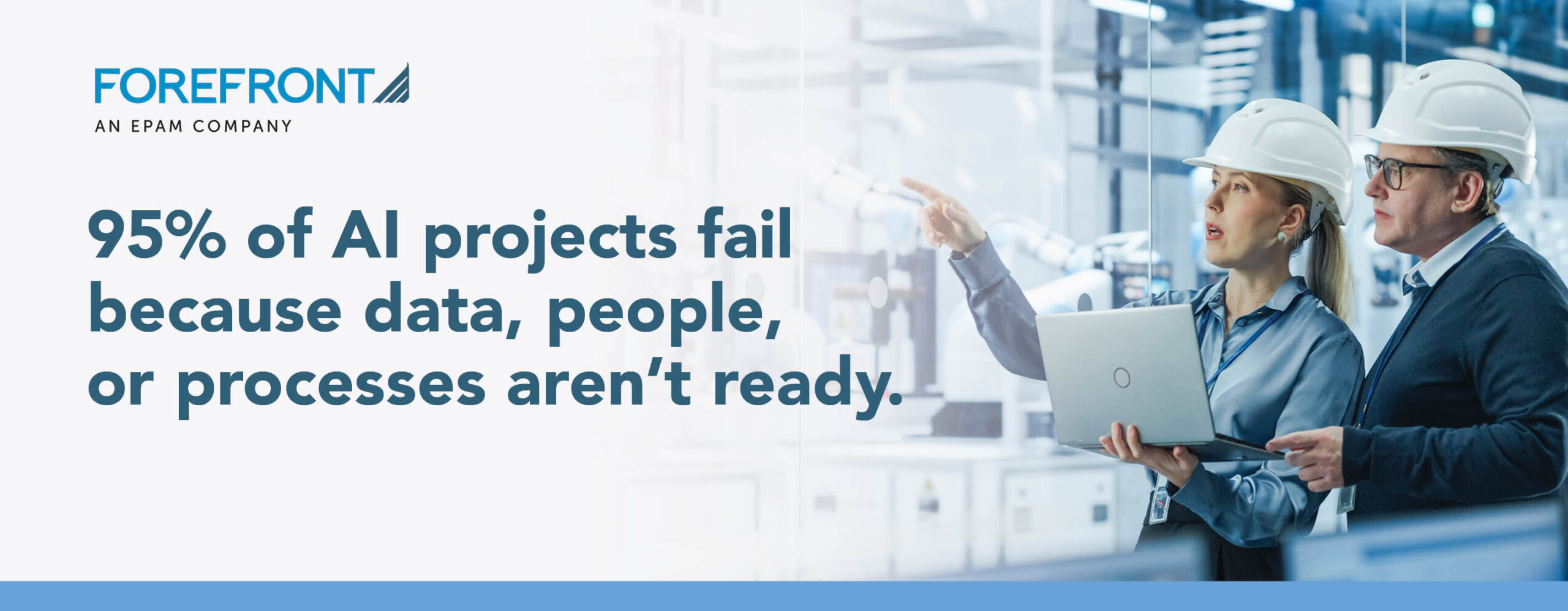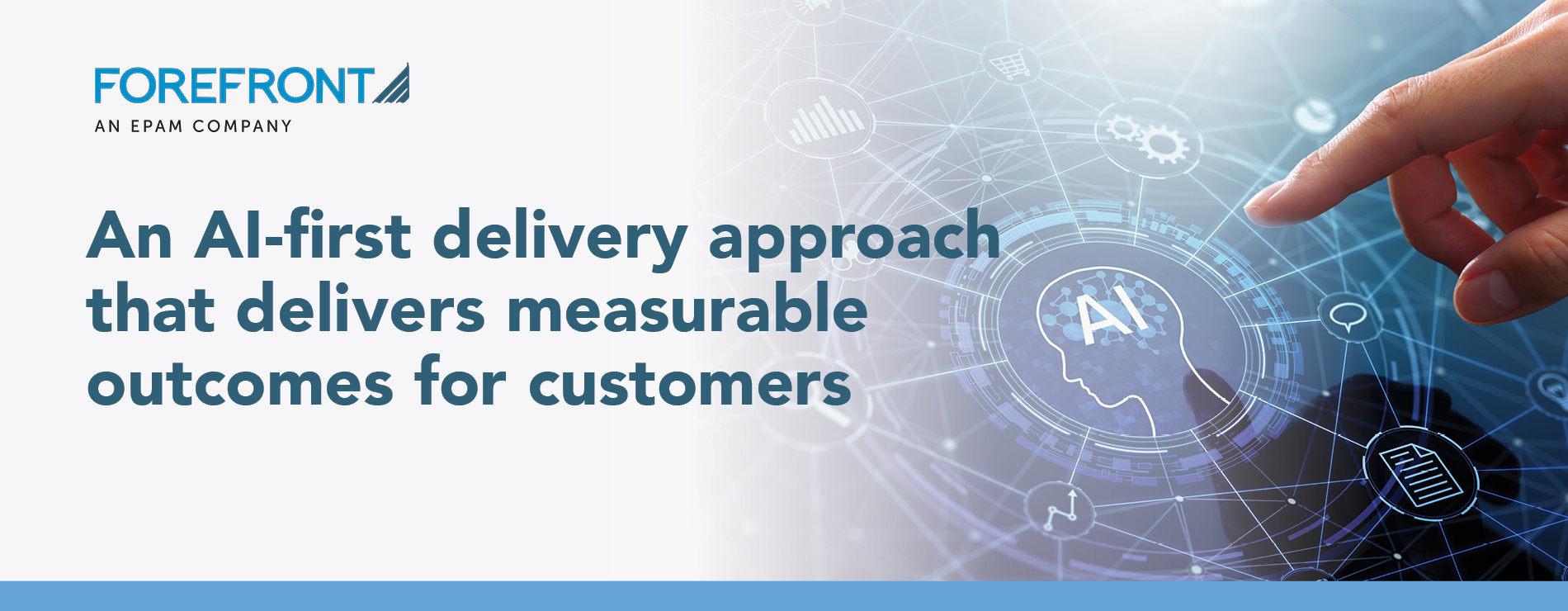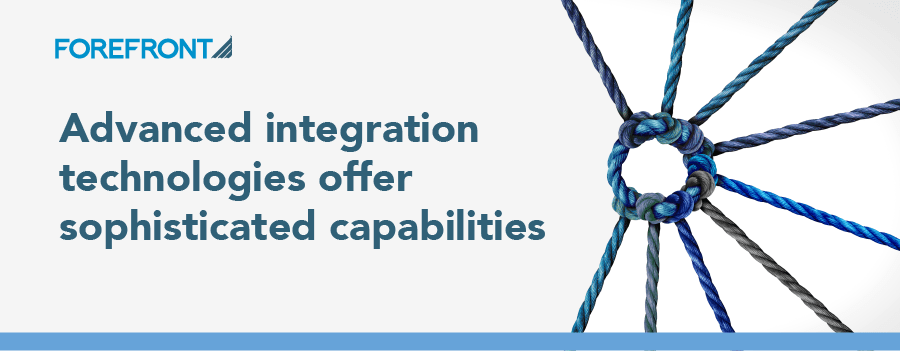
6 Smart Change Management Strategies for Sustained Salesforce Solution Success
By Peter M. Pirro, PMP, CCMP and Tim Green
A new or extended Salesforce solution offers an opportunity to transform your organization’s processes, increase efficiency and improve business performance. But, while expanded and enhanced capabilities offer a significant upside, change creates potential risk that requires mitigation.
Neglecting to manage change is the most avoidable cause of user acceptance challenges. Here’s why: Resistance to change is normal, anticipatable human behavior. Plans must be made to minimize its impact and maximize the likelihood of success.
It’s important, too, to understand that change management is not an end-of-project throw-in. It should go hand-in-hand with project initiation, woven throughout the project, embedded in the project plan and infused in the project team culture.
With all this in mind, here are six smart change management strategies we utilize to enable, support and sustain a successful Salesforce solution implementation:
1. Develop a Clear Vision
Determine what your post-implementation organization will look like, and know which (and how) your processes will change. Then, utilize share that information throughout your organization according to your Communication Plan (see 4. below).
Every organization expects a new solution to “transform” their business. But that’s a vague concept. What exactly does it mean? A Vision is an expressive, rallying sentence which encapsulates the high-level change but offers key benefits that will be identified with the implementation. In the eyes of your stakeholders, this is what your project will be measured against, so put thought and planning into its creation and delivery. Developing a Vision of the future – and then communicating it throughout the organization – is the key first step to successful change management.
2. Make the Case for Change
Be sure that every person at every level of your company understands why it is necessary to implement a new solution and remake key business processes, if necessary.
We believe that it’s critical to clearly articulate the case for change to your entire organization. And, what’s more, we encourage our clients to broadly share important details at the start of the project – information like project scope, rollout strategy and implementation schedule. You don’t have to share everything, however. You don’t want to bury (or bore) employees with too many details. Communicate role-specific information as needed.
3. Identify and Align Stakeholders and Leaders
Identify the people who will be affected by the changes that will come with the new solution. Be prepared to answer every question they will have. Make sure they understand what will happen and why.
Also, choose a team of business leaders who share a common vision for the transformation and embrace the changes to come. These managers and stakeholders must thoroughly understand and communicate the benefits of the project – and position it as a top-priority initiative. When you do this, you’ve created a group of “Change Champions.” They will be your ambassadors and conduits for reasoning and messaging.
4. Engage with Employees, Stakeholders and Influencers
Determine and analyze the impact of every change, and communicate appropriately (based on what they need to know) with every employee, team and function that will be affected. The importance of this cannot be overstated.
Develop and execute a detailed Communication Plan that covers the Ws – What will be communicated, to Whom, by Whom, Why, When, Where and by What means. Communications should cover the project scope, objectives, milestones and deliverables, present critical success factors and approaches, and discuss the transition to the new solution.
Incorporate the reach, talents and knowledge of your Change Champions to serve as a system of feedback, paired with support and training. Also, it’s important to identify other key influencers within your business, and gauge their understanding of, and level of support for, the project. Make a plan to maintain and boost their knowledge and support throughout the project.
Regularly assess the readiness of your business and people for change. Monitor the mood, enthusiasm, morale and level of support of your people by conducting mid-implementation check-ins and surveys. It’s critical to ensure that your stakeholders stay focused on the benefits that will come with the new solution – and not on the inevitable disruptions and uncomfortable changes. Ideally, the Vision was made clear at the onset, and your execution of the Communication Plan will connect the dots for team members at all levels.
5. Enable Realization of the Vision
Generate momentum as soon as you can – there’s no better time than the start of the project. Look closely at your business, functions and teams in terms of processes, organization and people systems. Then solidify your Change Management program which should detail the actions required, responsibilities and timeframe to get your organization to the endpoint.
Define new processes (using best practices) and adapt them to your specific needs as necessary. Determine job redesign and competency requirements for the new solution. And be aware that what “has always been done” may not work in the future – and that delineation, reasoning and support need to be in place to ensure that the Vision is accepted and embraced.
And last, provide employees, stakeholders, influencers and Change Champions with a big picture view of what the changed organization will look like, create a culture that aligns with the Vision, incentivize and reward people for their willingness to change, and provide support for future change.
6. Prepare the Organization for Success
What do your people need for sustained success working with your new solution and redesigned processes? The first and most obvious answer is training. So, it’s critical to develop, plan and implement training strategies to close knowledge gaps.
But long-term success often requires much more, including job redefinition, skill acquisition and organizational changes. It’s important to identify the new competencies that will be required. You will need to assess your workforce in terms of skills, abilities, experience and capabilities. And you will have to determine if any staffing changes will be necessary, including role changes, role creation and promotions.
How will you know if your change management efforts made a difference?
Change management intrinsically supports the success of your project. So, it’s fair to start with these questions:
• Did you achieve your desired business outcomes?
• Did your processes and business performance improve vs. pre-project metrics?
But you don’t wait until the end of the project to assess its success. Our change management methodology collects key metrics – using the aforementioned check-ins and surveys – from the kickoff and throughout your project. That way, it’s possible to see, gauge and monitor readiness/acceptance for change, support for change, confidence in the system, solution and software, confidence in usability, and confidence that the project will deliver the improvement promised, among other measures.
This detailed monitoring provides a view into even slight changes in the metrics, giving the Change Management team the ability to communicate key information, make corrections and provide targeted coaching in a timely manner – before small questions become big problems.
Another benefit delivered by this insight: You will know which employees and managers are adopters – people who will accept and welcome change, push forward and be able to support future projects and help make them successful.
In the end, here’s how we view Change Management: It’s a tie that binds the Vision to the project to the people to the future of your organization. By knowing the depth of the change, and the platform, processes and people that are involved, you’re one step ahead on your project – and much closer to achieving your Vision.






